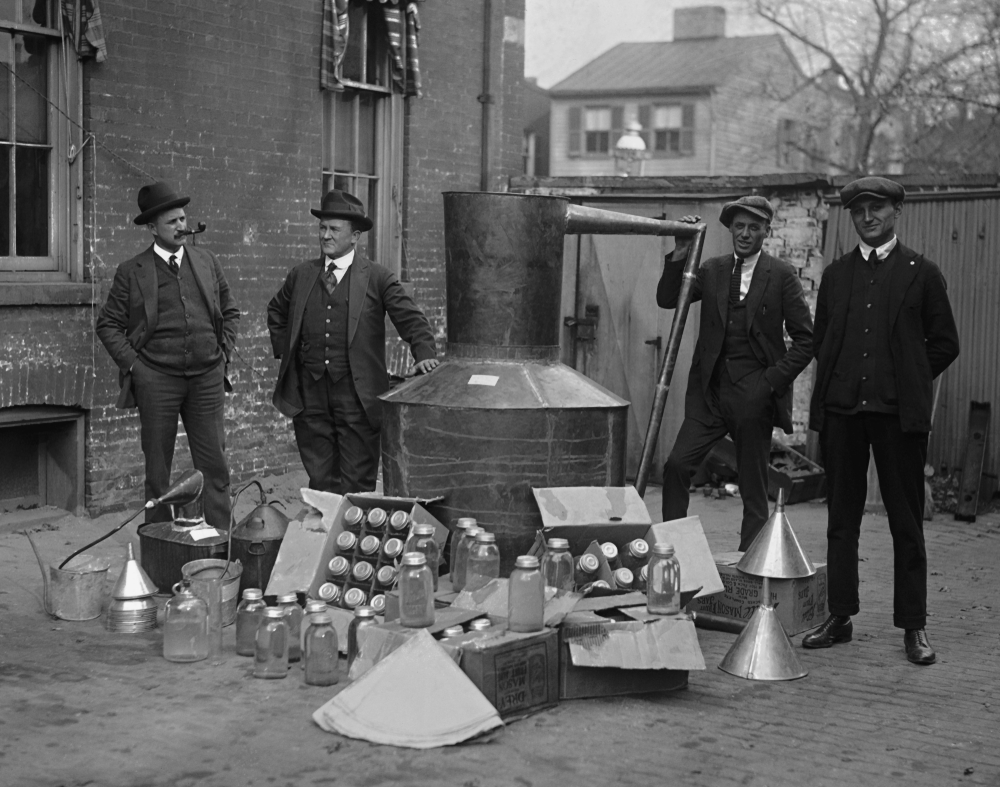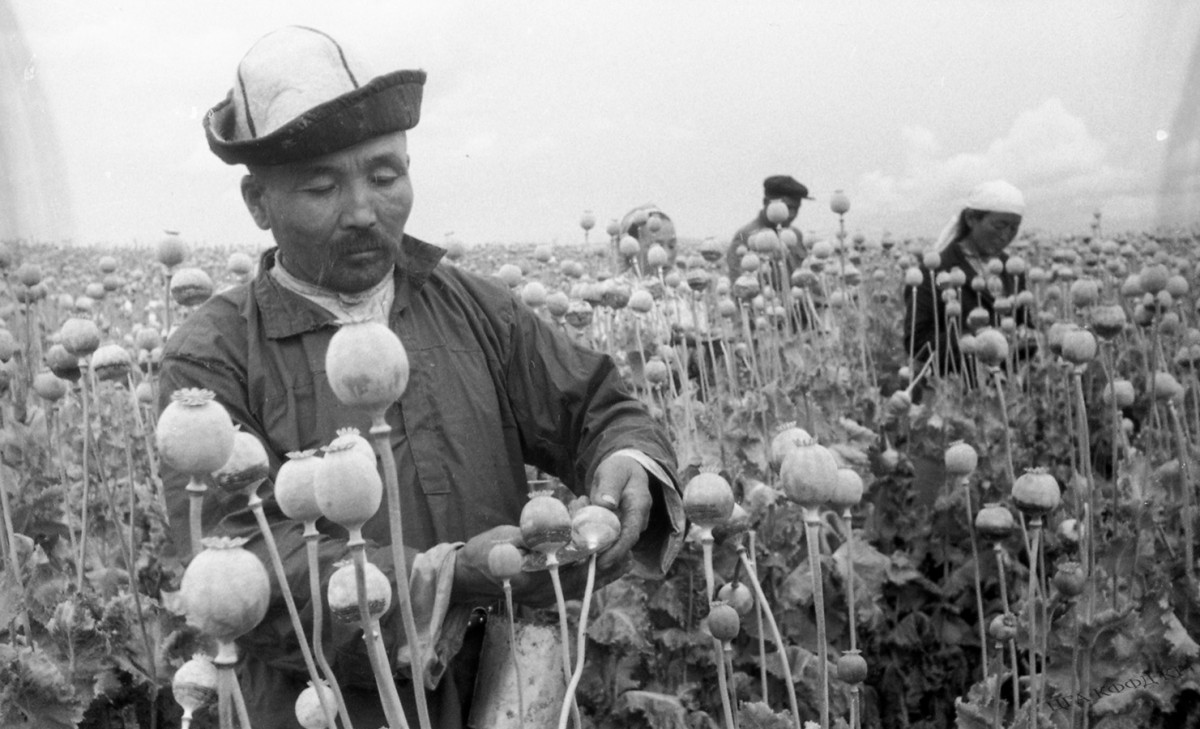Just past midnight on April 7th 1933, a truck pulled up to the White House filled with beer. President Roosevelt had just legalised 3.2% alcohol content beer, although it wasn’t until early December that the 18th Amendment, under which the production, sale and transport of intoxicating beverages was banned in the United States, would be fully repealed. Among the signs it wasn’t working was the rise of the Mob and bootlegging kingpins like ‘Lucky’ Luciano.
But while everyone knows the history of the failed “Noble Experiment”, its connection to the opioid crisis which is killing 100,000+ Americans annually is less apparent. A new documentary released on Amazon Prime, Dope Men, explores this connection.
“I wanted to examine and see how the Mafia formed and came into being as an organization or structure we recognize now,” director Seth Ferranti told TalkingDrugs.
“Before Prohibition, the Mafia were just street corner thugs who preyed on the people and businesses in their own neighborhoods. But the money they made in Prohibition helped them transform into a corporate-like structure. And when they saw that Prohibition was going to end, they were already looking toward the future and aligning with the dope trade. Because once you taste that kind of money and power that Prohibition brought, you didn’t want to lose it. They formed American’s first drug cartel.”
Although he coined it, the War on Drugs didn’t actually begin with Richard Nixon trying to stamp out hippies. Both drug and alcohol prohibition emerged in America at roughly the same time, in the late 19th century. Alcohol is a drug of course, but one more deeply engrained in white, Euro-American culture, and therefore perceived differently. Opium, on the other hand, was a sinister Oriental vice: in the 1870s, San Francisco enacted the nation’s first anti-narcotics law banning Chinese opium dens – more out of racist than public health concerns, since drug addiction wasn’t really a worry in the 19th century: Sherlock Holmes mainlined cocaine in his study over Baker Street and no-one (except Watson) batted an eyelid. Still, Americans were reconsidering their relationship to chemically-enhanced recreation.
Meanwhile, a hip new version of opium hit the pharmacy shelves: morphine, chiefly prescribed for pain. But when it – along with opium, cocaine and heroin – was effectively outlawed by the 1914 Harrison Act, many patients had already developed a physical dependency. The public perception of a “drug addict” shifted from a weak old lady taking her medication, to a bunch of skag fiends huddled around a spoon in a derelict house. As far as society was concerned these patients were now criminals, and they’d form the initial customer base for an incredibly profitable, and violent, business that continues to this day.
Alcohol Prohibition, meanwhile, was born out of the temperance movement of the 19th century, which urged total abstinence from the devil’s nectar. Contrary to common belief, the movement was not just reactionary Bible-thumpers. Feminists rallied against alcohol to shield mothers and children from black eyes, and so that their husbands would be sober enough to put food on the table. Among the campaigners there was a middle-class sense of knowing what was best for the masses that lived in squalor in America’s slums, believing drink to be the cause, rather than a symptom, of their poverty. The Anti-Saloon League, meanwhile, claimed that drinking leads to promiscuity and sin. If drinking wasn’t brought under control, warned E. W. Davis of the Chicago branch of the League, “Anglo-Saxon civilization would ultimately disappear.”
The movement was boosted by World War I, when it became un-American to be similar to booze-swilling Germans. Finally, in 1919, the 18th Amendment to the US Constitution was approved. It quickly became clear that keeping America sober would be an uphill battle. After all, everyone enjoyed drinking. Mere minutes after the Amendment came into effect, six masked bandits stole two freight cars full of whiskey from a rail yard in Chicago. Fighting over the profits of the now-illicit liquor industry were bootlegger barons and their fedora-wearing henchmen. These tough guys, with names like Al ‘Scarface’ Capone and Charles ‘Lucky’ Luciano, would be immortalised in films and TV series like The Untouchables and Boardwalk Empire.
“To me, the most interesting figure was Arnold Rothstein,” said Ferranti. “This guy was the gentleman gangster, the intermediary between the mobster tough guys and the legit citizens who sometimes needed the Mob to do their dirt. A gambler, Rothstein had extensive contact in both the upper and underworlds. He was a mentor to a lot of the younger mobsters like ‘Lucky’ Luciano and Jack ‘Legs’ Diamond.”
Increasingly, Prohibition increased lawlessness. The 1928 Chicago election was nicknamed the ‘Pineapple Primary’ for all the hand grenades lobbed at candidates’ houses. Despite Prohibition, or perhaps because of it, drinking became glamorous and cool, with lavish parties being thrown as immortalised in The Great Gatsby. Underground nightlife flourished among the affluent in big cities, eagerly supplied by organised crime. By 1927, 30,000 speakeasies had sprung up across the United States – twice the number of legal saloons there had been before.
By the 1930s, the Great Depression was taking its toll, and the nation needed something to boost morale and stimulate the economy. In the 1932 presidential election, minority and working-class Americans, sick of gangland shootings and racially-driven attacks, voted in droves for anti-Prohibition candidate Franklin D. Roosevelt, who won a landslide victory. “I think it’s time the country did something about beer,” he said, sitting in the Oval Office.
From one drug to another
Gangsters had to look for greener pastures. How that happened is the story told in Dope Men.
While alcohol Prohibition was repealed, bans on heroin, cocaine and morphine were not. In 1937, cannabis was added to the hall of shame. The transition from bootlegging to drug dealing was smooth: the same outfits were easily recycled. The Gulf Cartel, Mexico’s oldest criminal operation, began in the early 1930s as a small crew of rum-runners to Texas. But it was Rothstein and his New York clique, which included Luciano, Diamond and others, who pioneered narcotrafficking as it’s now known, dispatching envoys to broker drug deals in Europe and the Far East.
“These cartels are still around today, but not ran by the Italians,” said Ferranti.
“I think back in the 1920s criminals and gangsters could get away with so much more. Everything is so public today: murders on social media; gangsters stunting and fronting online. It’s a totally different world. I think mobsters like Luciano and especially Rothstein would cringe at what the gangsters of today get up to. But they still had a ‘fuck the police’ mentality. That has never changed.”
In many ways, Prohibition was a trial run for the War on Drugs. There was:
- Racial profiling (the Ku Klux Klan took the opportunity to bully Catholic immigrants and African-Americans);
- Mass imprisonment (in 1914 there were only 3,000 federal convicts; by 1930 there would be over 12,000, around a third of whom were Prohibition violators);
- An overdose crisis (On New Year’s Day 1927, forty-one New Yorkers alone died from poisoned hooch).
Now, almost 100 years since its end, we still haven’t learned our lesson.
Did anyone quit drinking, at least? Although rates of liver damage diminished in the 1920s, they similarly fell in “wet” countries, like Britain and Australia, which tightened their drinking laws but did not ban alcohol outright. Murder rates in the US jumped from 6.5 per 100,000 in 1918 before Prohibition, to 9.7 by 1933, the year it was repealed – a then-unprecedented record high which remained unbeaten until the 1980s and early 1990s, when the crack wars raged between the contemporary equivalents of Al Capone.
Seth was a prisoner of the drug war himself, having served twenty-one years for distributing weed and LSD.
“Prohibition was a blueprint for the War on Drugs,” he lays out. “The Dope Men have changed and so have law enforcement, but the ideologies set down by Anslinger have remained.”


